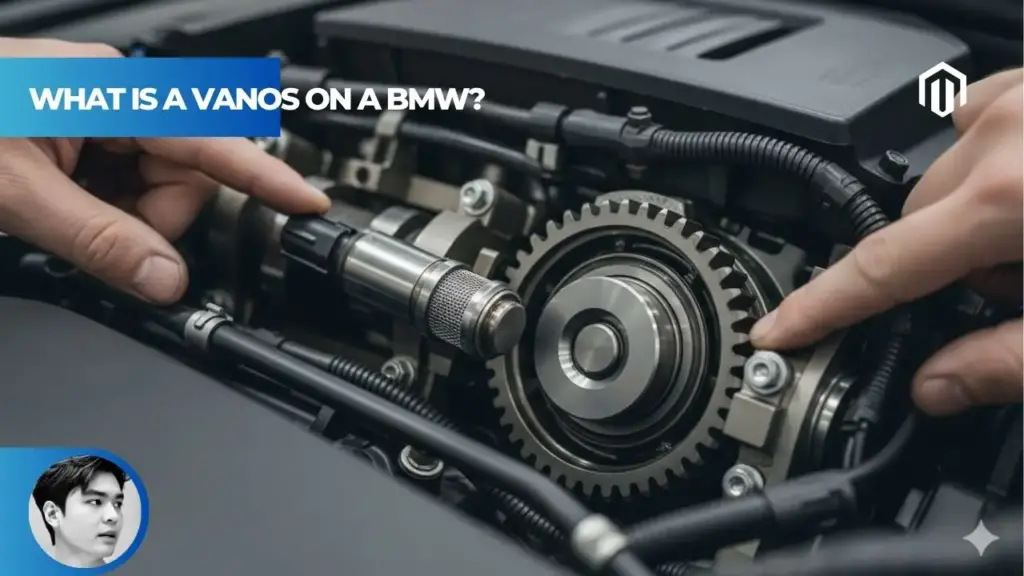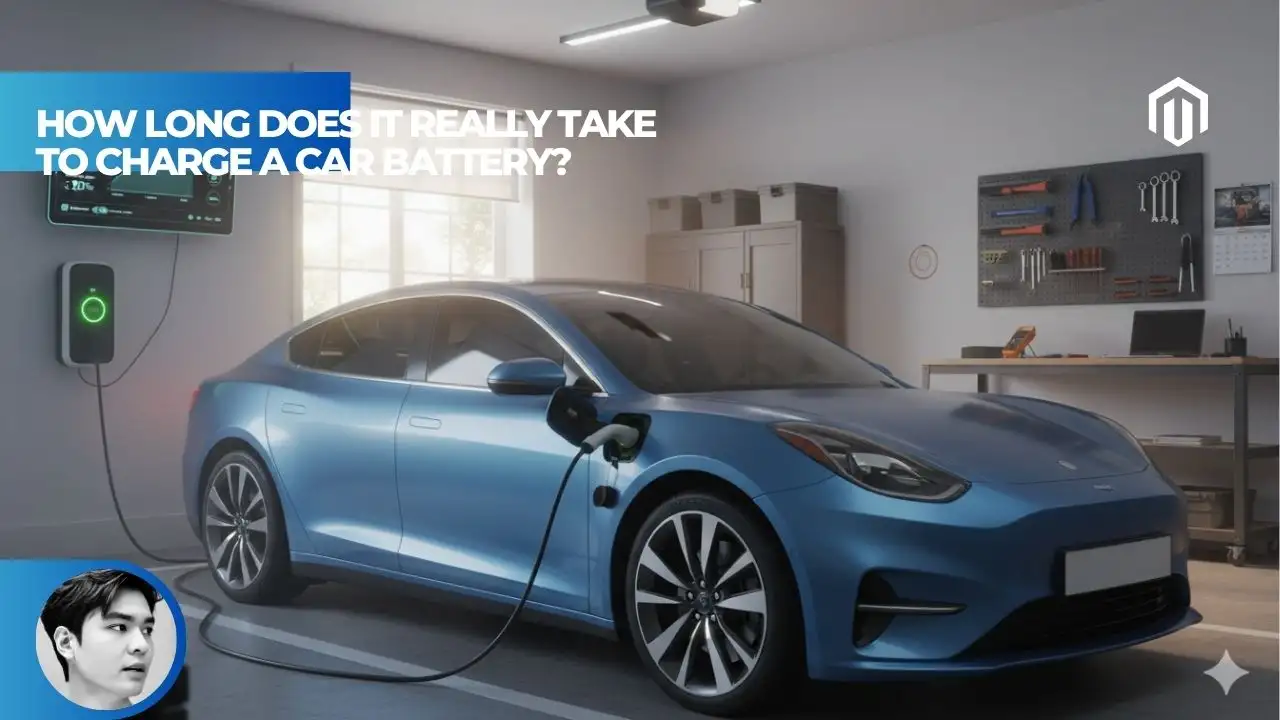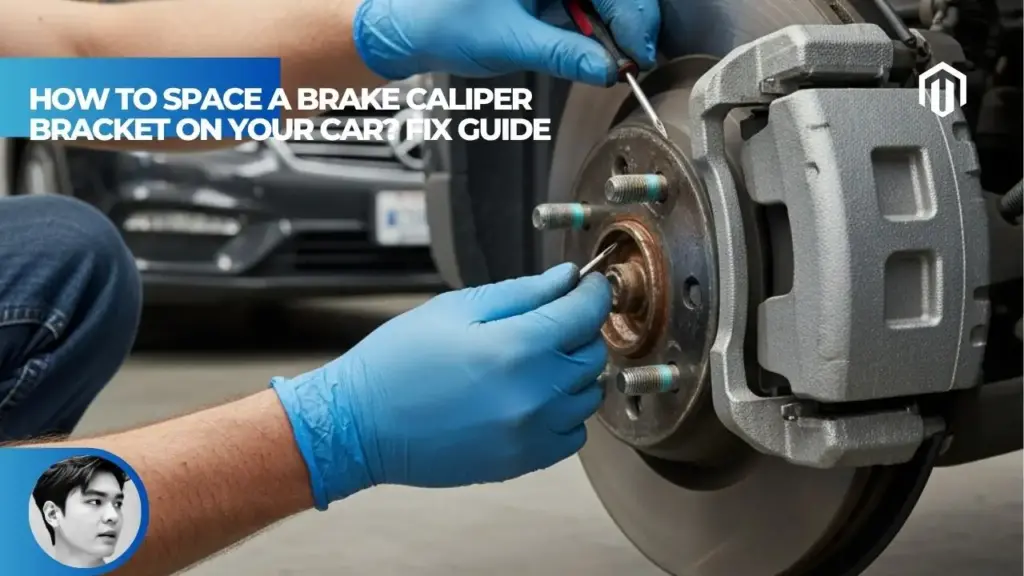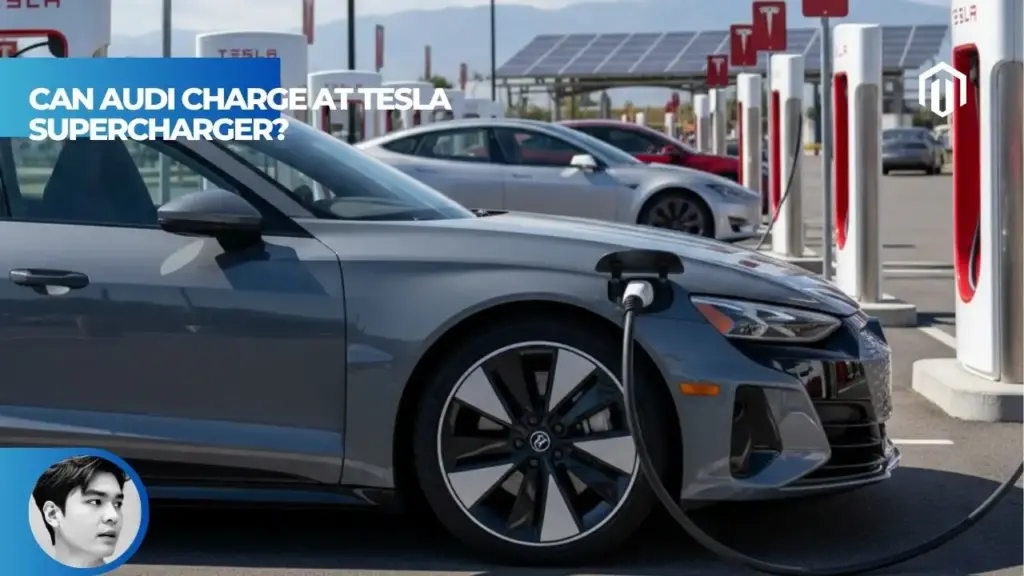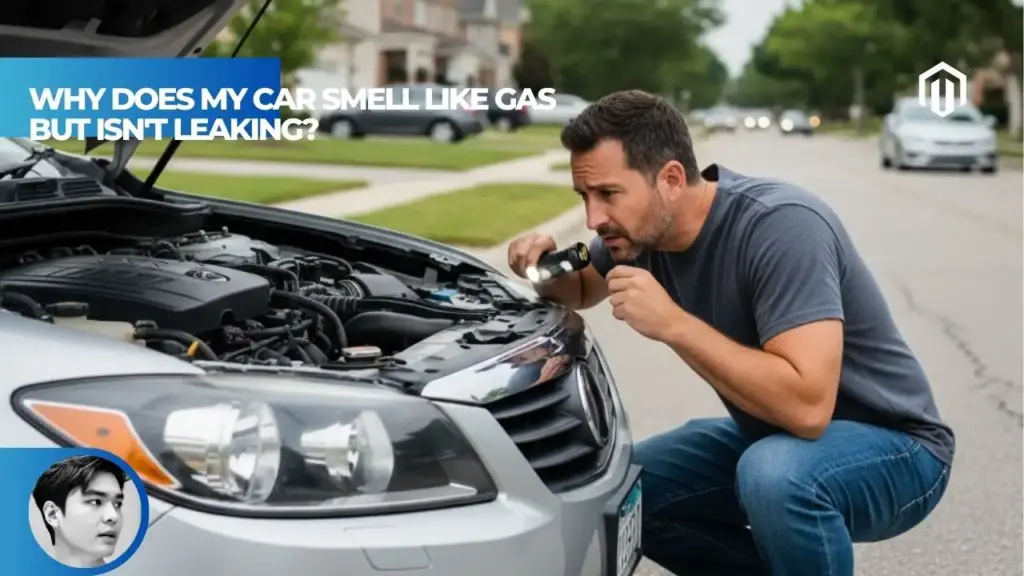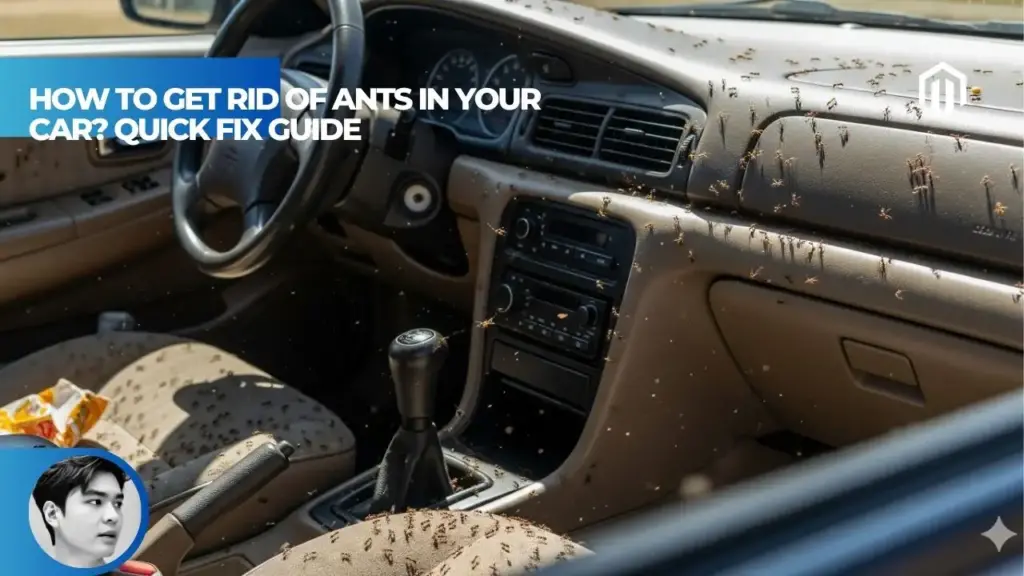You may also like:
- 【Explained】What Mileage Do BMW Start to Break Down? High-Mileage Costs and Lifespan
- 【Explained】What Engine Does the BMW i8 Have? Full Hybrid Powertrain Explained
- 【Explained】What Did BMW Start Making Before Cars? (From Planes to Cars)
- 【Explained】What Is More Reliable: BMW or Mercedes? (Repair Costs)
- 【Explained】What Is More Expensive: BMW or Mercedes? (Cost of Ownership)
VANOS is BMW’s variable camshaft timing system that stands for VAriable NOckenwellen Steuerung in German, utilizing oil pressure controlled by solenoids to adjust intake and/or exhaust camshaft timing for optimized performance across all RPM ranges. Introduced in 1992, this signature BMW technology improves fuel economy by 10-15%, increases low-end torque by up to 20%, and reduces emissions, though common failures include solenoid issues and worn seals causing rough idle, reduced power, and the characteristic VANOS rattle that costs $400-2,500 to repair[1].
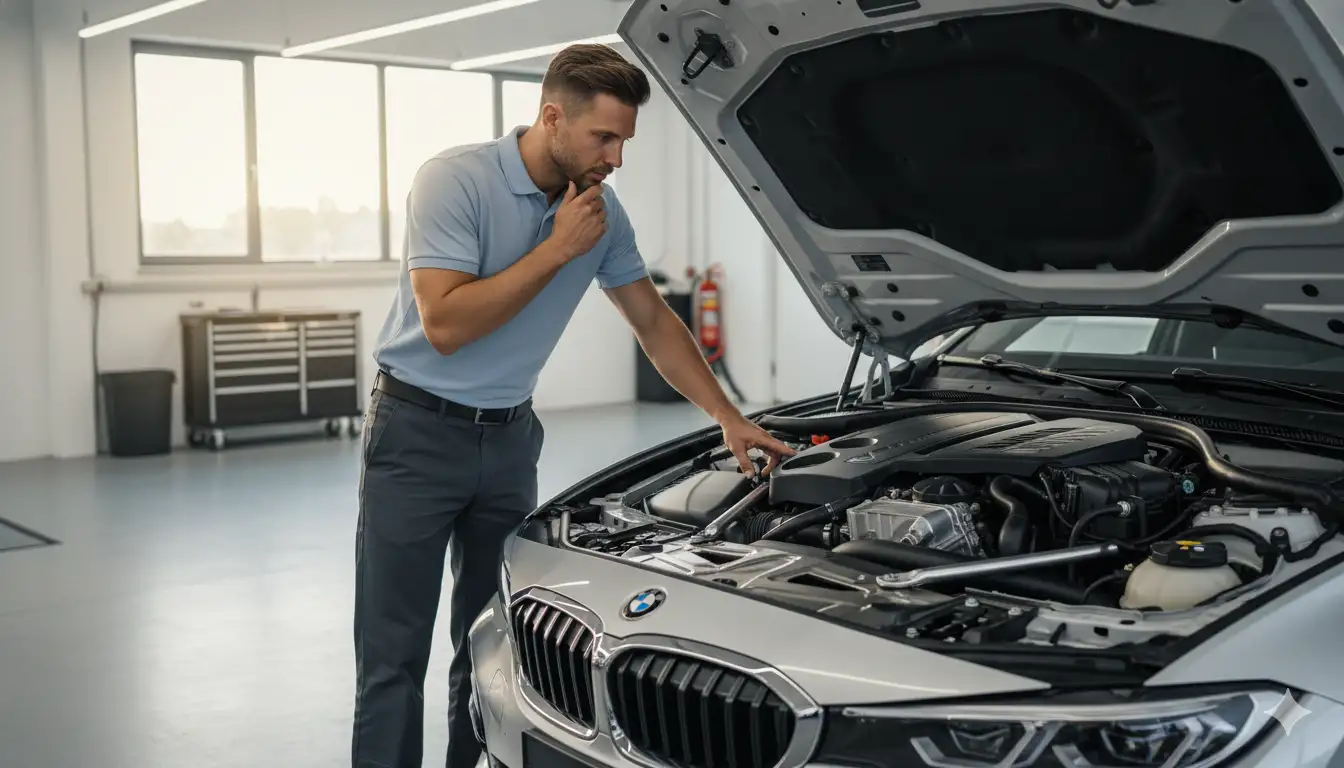
What Is a VANOS on a BMW – System Definition
Understanding VANOS starts with recognizing its fundamental purpose in modern BMW engines. According to Autvex’s technical analysis, this system represents one of the most significant advances in BMW’s pursuit of balancing performance with efficiency.
What Does VANOS Stand For (VAriable NOckenwellen Steuerung)
VANOS derives from the German phrase VAriable NOckenwellen Steuerung, which translates directly to “variable camshaft control” or “variable camshaft timing” in English. The name reflects BMW’s engineering heritage and their commitment to precise German terminology[2].
The German terminology breakdown:
- Variable: Continuously adjustable
- Nockenwellen: Camshaft (literally “cam shaft”)
- Steuerung: Control or timing
This naming convention follows BMW’s pattern of German acronyms like DSC (Dynamic Stability Control) and PDC (Park Distance Control), emphasizing their Bavarian engineering roots.
BMW Variable Valve Timing System Overview
The VANOS system functions as BMW’s proprietary approach to variable valve timing (VVT), competing directly with Honda’s VTEC and Toyota’s VVT-i. Unlike fixed camshaft timing that compromises between low-end torque and high-RPM power, VANOS continuously adjusts valve timing for optimal performance at every engine speed[3].
Key system characteristics:
- Hydraulic actuation: Uses engine oil pressure for operation
- Stepless adjustment: Infinite positioning within range
- ECU controlled: DME monitors and adjusts timing
- Fail-safe design: Defaults to retarded position if failure occurs
- Temperature compensated: Adjusts for oil viscosity changes
The system operates silently when functioning properly, with drivers only noticing its effects through improved drivability and fuel economy.
Purpose of VANOS System in BMW Engine
VANOS addresses the fundamental limitation of fixed camshaft timing—the inability to optimize valve events for both low and high RPM operation. Modern BMW models rely on VANOS to meet increasingly strict emissions standards while maintaining performance expectations[4].
Primary purposes include:
- Low RPM optimization: Later intake valve closing improves idle quality
- Mid-range torque: Earlier intake opening increases cylinder filling
- High RPM power: Delayed exhaust closing enhances scavenging
- Emissions reduction: Optimized overlap reduces unburned hydrocarbons
- Fuel economy: 10-15% improvement through better combustion efficiency
The system essentially gives BMW engines multiple personalities—smooth and economical during cruise, powerful when needed.
When Did BMW Introduce VANOS
BMW first introduced VANOS in 1992 on the M50 engine in the E34 5 Series, marking the beginning of variable valve timing in production BMWs. This initial “Single VANOS” system only adjusted intake camshaft timing[2].
VANOS evolution timeline:
- 1992: Single VANOS debuts (M50TU engine)
- 1996: Double VANOS introduced (S50B32 in Euro M3)
- 1998: Double VANOS reaches US market
- 2001: Valvetronic integration begins
- 2004: Double VANOS + Valvetronic standard
- Present: All modern BMW gasoline engines use VANOS
The technology has evolved from simple on/off operation to infinitely variable control with millisecond response times.
How the VANOS System Works
The VANOS mechanism combines hydraulic, mechanical, and electronic components working in precise harmony to adjust camshaft timing.
Oil Pressure Control VANOS Mechanism
VANOS relies entirely on engine oil pressure for actuation, making oil quality and pressure critical for proper operation. The system directs pressurized oil to move internal pistons that rotate the camshaft relative to its drive gear[5].
Oil circuit operation:
- Oil pump generates 30-80 PSI pressure
- VANOS solenoid directs oil flow
- Hydraulic piston moves within VANOS unit
- Helical gear converts linear to rotational motion
- Camshaft advances or retards accordingly
Oil specifications matter significantly—using incorrect viscosity causes sluggish VANOS response or complete failure. BMW specifies 0W-30 or 5W-30 synthetic oil meeting LL-01 standards.
VANOS Solenoid Valve Function
The VANOS solenoid serves as the control valve directing oil flow to advance or retard camshaft timing. When warning lights appear, solenoid failure often triggers them[6].
Solenoid operation details:
- PWM controlled: Pulse-width modulation for precise positioning
- Dual-acting: Controls both advance and retard chambers
- Filtered screens: Protect against debris contamination
- Temperature sensors: Monitor oil temperature for compensation
- Position feedback: Hall sensors verify actual camshaft position
Failed solenoids typically stick open or closed, causing fixed timing and poor performance across the RPM range.
VANOS Gear Unit Operation
The VANOS unit contains a helical gear mechanism that converts hydraulic pressure into rotational movement. This precision-machined assembly mounts between the camshaft and its drive sprocket[3].
Gear unit components:
- Helical splines: 15-degree angle typical
- Hydraulic piston: Moves 10-15mm travel
- Return springs: Ensure fail-safe operation
- Sealing rings: Prevent internal oil leakage
- Bearing surfaces: Support radial loads
The helical design provides mechanical advantage, allowing relatively low oil pressure to overcome valve spring forces.
DME Control of VANOS
The Digital Motor Electronics (DME) serves as the brain controlling VANOS operation, processing dozens of inputs to determine optimal camshaft timing. Modern DME systems adjust VANOS position up to 100 times per second[7].
DME control parameters:
- Engine speed: Primary input for base timing
- Load/throttle position: Determines torque demand
- Coolant temperature: Cold start enrichment
- Oil temperature: Viscosity compensation
- Knock sensors: Retard timing if detonation detected
- Oxygen sensors: Fine-tune for emissions
The DME stores adaptation values, learning optimal positions over time to compensate for wear.
Camshaft Adjusters BMW
BMW’s camshaft adjusters integrate directly with the VANOS system, featuring precision-ground profiles optimized for variable timing operation. These components must maintain exact tolerances despite thermal expansion and wear[4].
Adjuster specifications:
- Adjustment range: 40-60 degrees typical
- Response time: 0.3-0.5 seconds full travel
- Position accuracy: ±1 degree
- Operating temperature: -40°F to 300°F
- Service life: 150,000+ miles with maintenance
Modern adjusters incorporate anti-backlash mechanisms reducing the notorious VANOS rattle.
Types of VANOS Systems
BMW has developed multiple VANOS variants, each addressing specific engine requirements and performance goals.
Difference Between Single VANOS and Double VANOS
The distinction between Single and Double VANOS represents a major evolution in system capability. Single VANOS only adjusts intake timing, while Double VANOS controls both intake and exhaust camshafts independently[8].
Comparison of systems:
| Feature | Single VANOS | Double VANOS |
|---|---|---|
| Intake Control | Yes | Yes |
| Exhaust Control | No | Yes |
| Adjustment Range | 25° | 40-60° |
| Torque Improvement | 5-10% | 10-15% |
| Fuel Economy Gain | 5-8% | 10-12% |
| Introduction Year | 1992 | 1996 |
Double VANOS provides superior emissions control through optimized valve overlap during catalyst light-off.
BMW M-VANOS Systems
BMW M division developed specialized VANOS variants for high-performance applications requiring faster response and greater durability. M-VANOS systems feature upgraded components handling higher RPMs and oil temperatures[9].
M-VANOS enhancements:
- High-pressure solenoids: 100+ PSI capability
- Reinforced gears: Handle 8,000+ RPM
- Racing-grade seals: Viton material for heat resistance
- Dual oil feeds: Redundant supply for reliability
- Competition mapping: Aggressive timing strategies
The S54 engine in the E46 M3 showcases M-VANOS capabilities with its 8,000 RPM redline.
S54 S65 VANOS Differences
The S54 (E46 M3) and S65 (E90/E92 M3) engines represent two generations of M-VANOS technology. While both use Double VANOS, implementation details differ significantly[10].
S54 vs S65 comparison:
- S54: Dual VANOS with traditional solenoids
- S65: High-pressure VANOS with dual solenoids per bank
- Response time: S65 50% faster actuation
- Adjustment range: S65 offers 15° additional range
- Reliability: S54 prone to hub failures, S65 to bearing wear
According to Autvex research, S65 VANOS units typically require attention around 60,000 miles versus 80,000 for S54.
N52 N55 N62 VANOS Components
Modern BMW engines like the N52, N55, and N62 utilize second-generation Double VANOS with improved reliability and performance. These engines typically experience VANOS issues around 80,000-100,000 miles[11].
Engine-specific components:
N52 (naturally aspirated inline-6):
- Magnesium/aluminum housing
- Single solenoid per camshaft
- 255° duration capability
N55 (turbocharged inline-6):
- Reinforced for boost pressure
- Faster actuation for turbo response
- Oil cooling provisions
N62 (V8):
- Dual independent systems
- Bank-specific control
- Hot-V configuration challenges
Each engine family requires specific VANOS parts—interchange is not possible despite visual similarity.
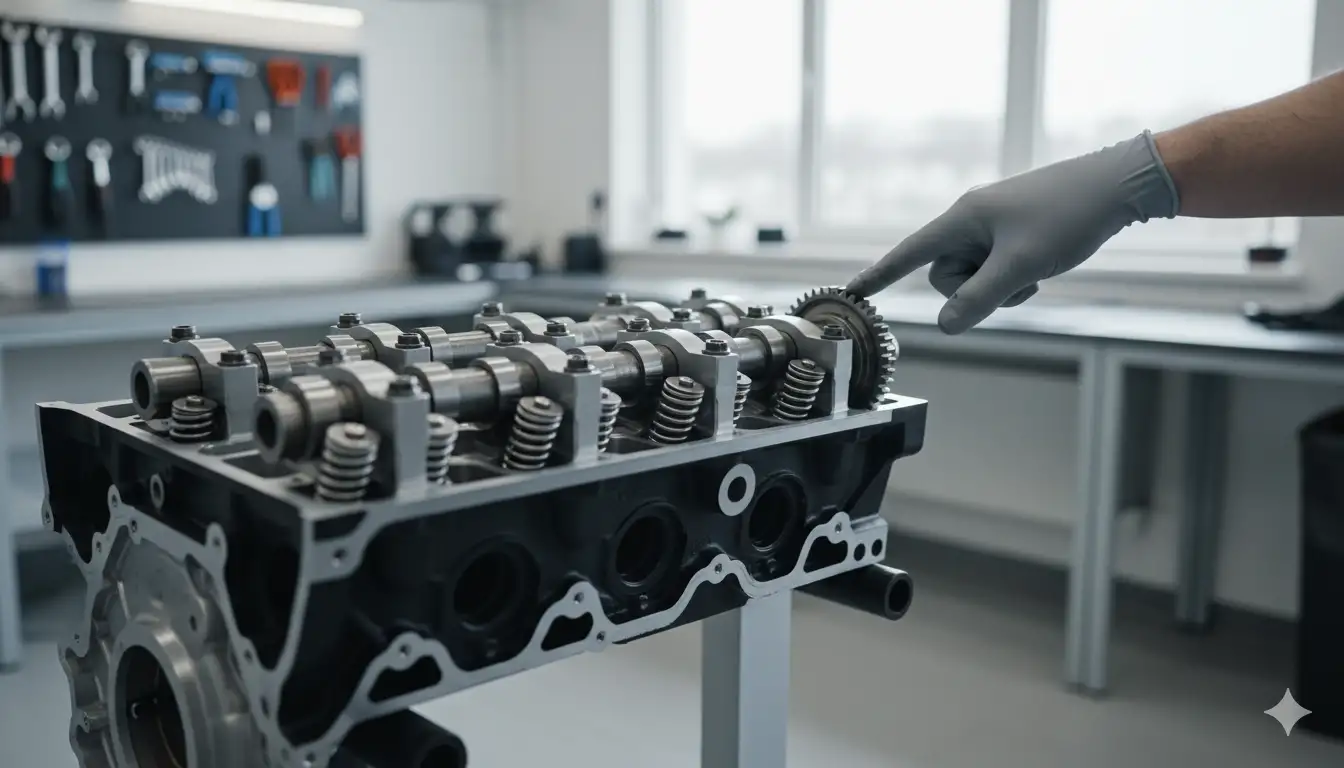
Benefits and Performance Impact
VANOS technology delivers measurable improvements in every aspect of engine operation, from idle quality to peak power output.
How VANOS Improves Performance and Fuel Economy
VANOS optimization yields 10-15% fuel economy improvement while simultaneously increasing power and torque. This seemingly contradictory achievement comes from optimizing valve timing for each operating condition[12].
Performance improvements:
- Idle quality: 40% reduction in HC emissions
- Low-end torque: 15-20% increase at 2,000 RPM
- Peak power: 5-8% gain at redline
- Fuel economy: 2-3 MPG city improvement
- Emissions: Meets LEV III standards
Real-world example: The 328i achieves 28 MPG city despite 240 horsepower, impossible without VANOS optimization.
VANOS vs Valvetronic BMW
While VANOS controls when valves open, Valvetronic controls how much they open, eliminating the traditional throttle plate. Combined, these systems provide unprecedented engine control[3].
System comparison:
| Technology | Function | Benefit |
|---|---|---|
| VANOS | Timing control | Torque/efficiency |
| Valvetronic | Lift control | Throttle-free operation |
| Combined | Full valve control | 10% additional efficiency |
Valvetronic adds complexity but enables BMW’s EfficientDynamics strategy achieving 35+ MPG highway.
BMW Variable Lift System Integration
The integration of VANOS with Valvetronic creates a fully variable valve train rivaling Formula 1 technology. This combination allows infinitely variable valve timing and lift[13].
Integration benefits:
- Throttle elimination: Reduced pumping losses
- Miller cycle capability: Improved thermal efficiency
- Cylinder deactivation: V8 models can run on 4 cylinders
- Performance modes: Sport+ enables aggressive profiles
- Cold start optimization: Faster catalyst heating
The system requires precise coordination—a 1mm lift error causes misfires and rough running.
Timing Chain Issues Related to VANOS
VANOS operation directly affects timing chain tension and wear. Rapid VANOS adjustments create additional chain loads, accelerating guide and tensioner wear[14].
Chain-related issues:
- Guide wear: Plastic guides deteriorate faster
- Tensioner failure: Hydraulic tensioners lose pressure
- Chain stretch: 2-3% elongation over 100,000 miles
- Correlation faults: Chain slack affects VANOS timing
- Catastrophic failure: Jumped timing destroys valves
BMW recommends timing chain inspection every 60,000 miles on VANOS-equipped engines, though many fail earlier.
VANOS Failure Symptoms and Diagnosis
Recognizing VANOS problems early prevents expensive engine damage and maintains optimal performance.
Symptoms of Bad VANOS Solenoid
Failed VANOS solenoids manifest through multiple driveability symptoms often misdiagnosed as other issues. Compared to Audi’s variable timing, BMW’s system shows more obvious symptoms[15].
Common solenoid failure symptoms:
- Rough idle: Engine hunts between 500-800 RPM
- Power loss: Especially below 3,000 RPM
- Poor fuel economy: 20-30% reduction typical
- Hesitation: Lag when accelerating from stop
- Limp mode: DME limits RPM to prevent damage
- Cold start issues: Extended cranking time
Symptoms typically worsen with temperature—cold oil exacerbates solenoid sticking.
BMW VANOS Rattle Noise
The infamous “VANOS rattle” sounds like marbles in a tin can during cold starts and low RPM operation. This noise indicates worn hub tabs or failed anti-rattle components[1].
Rattle characteristics:
- Timing: Most noticeable 1,500-2,500 RPM
- Temperature: Worse when cold
- Duration: 2-5 seconds typically
- Location: Front of engine near valve cover
- Progression: Worsens over time
Ignoring VANOS rattle leads to complete hub failure, potentially causing valve-to-piston contact costing $5,000+.
Rough Idle and Poor Acceleration Due to VANOS
VANOS-related rough idle differs from typical vacuum leaks or misfires through its RPM-dependent nature. The idle may smooth out above 1,000 RPM as oil pressure increases[16].
Diagnostic observations:
- Idle fluctuation: ±100 RPM variation
- Acceleration lag: 1-2 second delay
- Torque loss: 30-40% below 3,000 RPM
- Stumbling: During light throttle cruise
- Stalling: At stop lights when warm
These symptoms worsen progressively—what starts as occasional roughness becomes constant within months.
VANOS Fault Codes (P0011, P0012)
VANOS failures generate specific fault codes helping diagnose the exact problem. Modern BMW scanners display both generic OBD-II and BMW-specific codes[17].
Common VANOS codes:
- P0011: “A” Camshaft Position – Timing Over-Advanced (Bank 1)
- P0012: “A” Camshaft Position – Timing Over-Retarded (Bank 1)
- P0014: “B” Camshaft Position – Timing Over-Advanced (Bank 1)
- P0015: “B” Camshaft Position – Timing Over-Retarded (Bank 1)
- P0024: Exhaust Camshaft Position Timing Over-Advanced (Bank 2)
- 2A82: VANOS intake solenoid (BMW specific)
- 2A87: VANOS exhaust solenoid (BMW specific)
Multiple codes typically indicate solenoid failure rather than mechanical issues.
VANOS Maintenance and Repair
Proper maintenance extends VANOS life significantly, while neglect leads to expensive failures.
Cleaning vs Replacing VANOS Solenoids
The decision between cleaning or replacing VANOS solenoids depends on contamination level and component age. According to Autvex data, cleaning succeeds 70% of the time if caught early[18].
Cleaning procedure:
- Remove solenoids (20 minutes)
- Spray with brake cleaner
- Compressed air dry
- Test resistance (should be 7-15 ohms)
- Reinstall with new O-rings
- Clear codes and test drive
Replacement criteria:
- Failed resistance test
- Physical damage visible
- Over 100,000 miles
- Repeated cleaning failures
- Cost: $150-300 per solenoid
Professional cleaning costs $200-400 while replacement runs $400-800 including labor.
Cost to Repair VANOS Unit BMW
VANOS repair costs vary dramatically based on the specific failure and chosen repair facility. Independent shops charge 30-50% less than BMW dealerships[19].
Typical repair costs:
| Service | Dealership | Independent | DIY |
|---|---|---|---|
| Solenoid Cleaning | $400-600 | $200-400 | $50 |
| Solenoid Replacement | $800-1,200 | $400-800 | $200 |
| Seal Replacement | $1,500-2,000 | $800-1,200 | $300 |
| Complete Unit | $2,000-3,500 | $1,200-2,000 | $600 |
Labor represents 60-70% of professional repair costs due to complexity and time requirements.
VANOS Anti-Rattle Kits (Beisan Systems)
Beisan Systems developed upgraded VANOS components addressing factory design flaws. Their kits include reinforced seals and anti-rattle tabs lasting significantly longer than OEM parts[20].
Beisan kit contents:
- Viton O-rings: Heat-resistant material
- Teflon seals: Reduced friction
- Steel tabs: Replace plastic originals
- Installation guide: Step-by-step instructions
- Price: $100-300 depending on engine
Installation requires 4-8 hours for experienced DIYers, potentially saving $1,000+ in labor costs.
How Often Should I Clean or Replace My VANOS Solenoids
Preventive VANOS maintenance follows time and mileage intervals modified by driving conditions. When evaluating used BMWs, VANOS service history proves critical[11].
Recommended service intervals:
- Cleaning: Every 60,000 miles
- Inspection: Every 30,000 miles
- Oil changes: Every 5,000 miles (critical)
- Seal replacement: 100,000-150,000 miles
- Complete overhaul: 150,000-200,000 miles
Severe duty (track use, short trips) requires 50% shorter intervals to prevent premature failure.
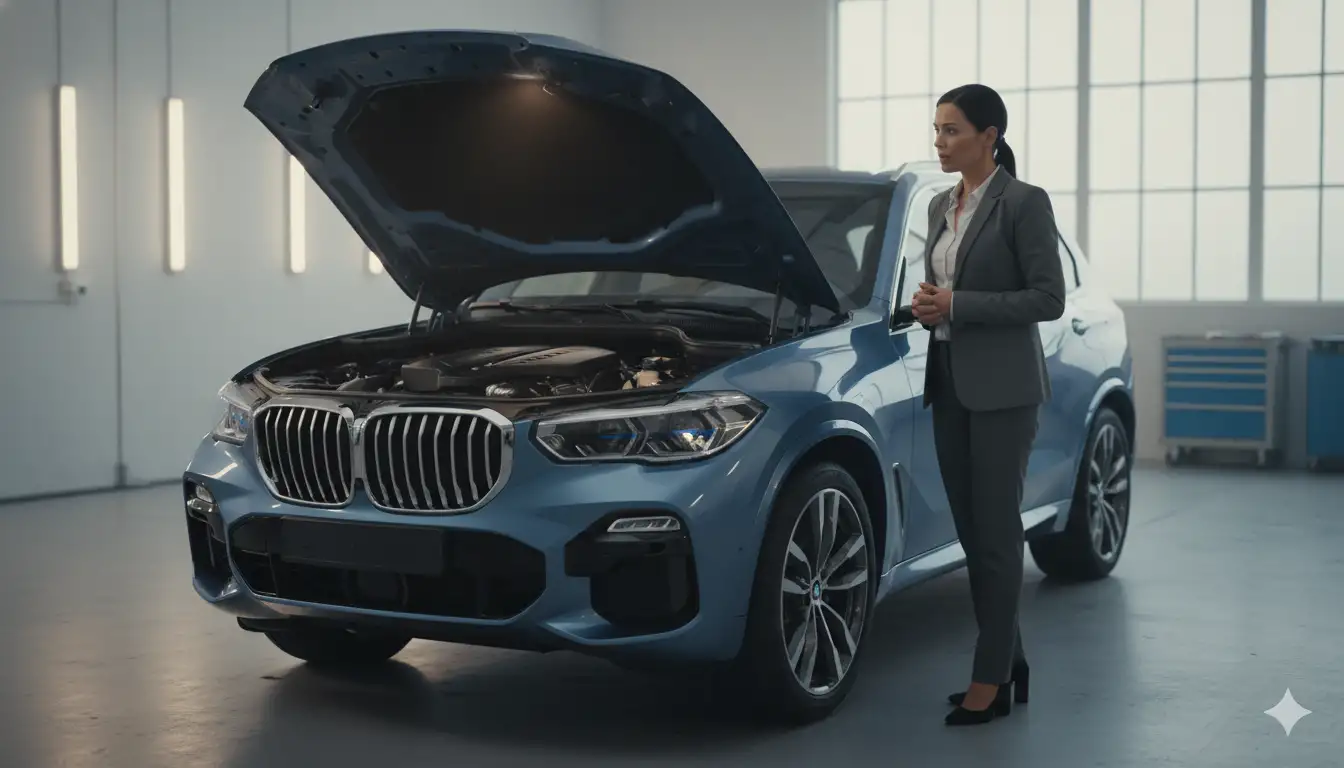
Key Takeaways
- VANOS stands for VAriable NOckenwellen Steuerung, BMW’s variable camshaft timing system since 1992
- Oil pressure drives the system through solenoid-controlled hydraulic pistons adjusting camshaft position
- Single VANOS controls intake only while Double VANOS adjusts both intake and exhaust timing
- Common failures include solenoid contamination and worn seals causing rough idle and power loss
- Repair costs range $400-2,500 depending on whether cleaning or replacement is needed
- Preventive maintenance every 60,000 miles extends system life and prevents expensive failures
- VANOS rattle indicates immediate attention needed to prevent catastrophic engine damage
Decision Path / Next Steps
For Current BMW Owners Experiencing Symptoms:
Have fault codes scanned immediately at a BMW-specialized shop to identify specific VANOS issues. If codes P0011-P0015 appear, start with solenoid cleaning ($200-400) before considering replacement. Budget $1,000-1,500 for potential repairs if cleaning fails. Consider Beisan Systems upgrade kits for long-term reliability on high-mileage vehicles. Document all repairs for resale value.
For Prospective BMW Buyers:
Request VANOS service history during pre-purchase inspection—lack of records indicates potential $2,000+ repair liability. Listen for VANOS rattle during cold starts and test drives. Factor VANOS maintenance into ownership costs, adding $500 annually for preventive service. Consider extended warranties covering VANOS components on vehicles approaching 60,000 miles. [Newer models] feature improved VANOS reliability worth the premium.
For DIY Mechanics:
Invest in BMW-specific diagnostic tools ($200-500) to read manufacturer codes accurately. Start with cleaning before expensive replacements—success rate justifies the effort. Purchase Beisan Systems kits for permanent solutions to common failures. Join BMW forums for model-specific guidance and torque specifications. Allow full day for first VANOS service attempt.
FAQs
What does VANOS stand for in German?
VANOS stands for VAriable NOckenwellen Steuerung, which translates to “variable camshaft timing” in English.
Is it expensive to fix the VANOS system on a BMW?
Repair costs range from $400-800 for solenoid cleaning to $1,000-2,500 for complete unit replacement, depending on model and labor rates.
What are the symptoms of a failing VANOS unit or solenoid?
Common symptoms include rough idle, loss of low-RPM power, hesitation during acceleration, poor fuel economy, and check engine light.
What is the difference between Single and Double VANOS?
Single VANOS adjusts only the intake camshaft timing, while Double VANOS controls both intake and exhaust camshafts for more precise control.
Do all modern BMW engines still use VANOS?
Yes, virtually all modern BMW gasoline engines use VANOS technology, often combined with Valvetronic variable valve lift.
How often should I clean or replace my VANOS solenoids?
Clean solenoids every 60,000-80,000 miles preventively. Replace when cleaning no longer resolves symptoms or at 100,000-150,000 miles.
Does a failing VANOS system affect fuel economy?
Yes, failed VANOS significantly reduces fuel economy as the engine cannot optimize valve timing for efficient combustion.
Does the VANOS system have a timing belt or chain?
VANOS-equipped BMWs use timing chains, not belts. The VANOS system itself doesn’t have a belt but relies on the engine’s timing chain.
References
- BMW Vanos System Failure Cost Guide. (2025). Bumper UK. https://www.bumper.co/blog/bmw-vanos-system-failure-cost
- VANOS. (2004). Wikipedia. https://en.wikipedia.org/wiki/VANOS
- Knauf Automotive. (2024). Vanos system – what is it and how does it work? https://knaufautomotive.com/the-vanos-variable-valve-timing-system/
- Motor Werke. (2022). BMW’s VANOS System and Common Issues Explained. https://motorwerke.ca/bmws-vanos-system-and-common-issues-explained/
- Lafayette German Car Repair. (2025). Understanding the VANOS BMW System. https://www.lafayettegermancarrepair.com/vanos-bmw/
- Cerrone’s European. (2025). Signs Your BMW’s e90 VANOS Solenoid Needs Repair. https://www.cerroneseuropean.com/signs-your-bmws-e90-vanos-solenoid-needs-repair/
- Stress Free. (2020). The Function of VANOS in BMWs. https://www.stressfree.com/blog/the-function-of-vanos-in-bmws
- Bimmerforums. (2005). Double vanos vs single vanos. https://www.bimmerforums.com/forum/showthread.php?156660-double-vanos-vs-single-vanos
- BW Performance. (2024). BMW VANOS System: Tips for Dealing with Common Issues. https://bwperformance.com/bmw-vanos-system-survival-guide-common-issues-and-fixes/
- M3List. (2024). What is Vanos? A Comprehensive Guide to the BMW E46. https://m3list.com/what-does-vanos-stand-for-what-are-the-symptoms-and-how-does-it-work/
- Oriona2. (2025). 6 Common VANOS Issues on BMW Engines. https://oriona2.com/6-common-vanOS-issues-on-bmw-engines/
- Reddit E39. (2022). Performance difference between double vanos and single vanos. https://www.reddit.com/r/e39/comments/y6iptg/performance_difference_between_double_vanos_and/
- YouTube. (2023). The BMW VANOS System EXPLAINED! https://www.youtube.com/watch?v=nr1gbZrs8jQ
- NAM3 Forum. (2022). Vanos Repair Price. https://nam3forum.com/forums/forum/main-forum/e46-2001-2006/168637-vanos-repair-price
- Autoscope Car Care. (2020). How Do I Know If My Vanos Solenoid Is Bad? https://www.autoscopecarcare.com/bmw-forum/how-do-i-know-if-my-vanos-solenoid-is-bad/
- YouTube. (2023). Symptoms & Diagnosis of a Failing VANOS Solenoid! https://www.youtube.com/watch?v=1AVYtMrlvpE
- Bimmerforums. (2014). Vanos solenoid vs seals failure symptoms. https://www.bimmerforums.com/forum/showthread.php?2099416-Vanos-solenoid-vs-seals-failure-symptoms
- M3Post Forum. (2023). Price quote on vanos cover replacement. https://www.m3post.com/forums/showthread.php?t=2073529
- Reddit E46M3. (2025). Average price to repair/replace vanos? https://www.reddit.com/r/E46M3/comments/1l4hrxu/average_price_to_repairreplace_vanos/
- DrVanos. (2022). BMW Vanos Repair. https://drvanos.com

I am a senior automotive analyst at Autvex. Expert vehicle evaluations, in-depth reviews, and objective analysis helping readers make informed automotive decisions with years of industry experience.

